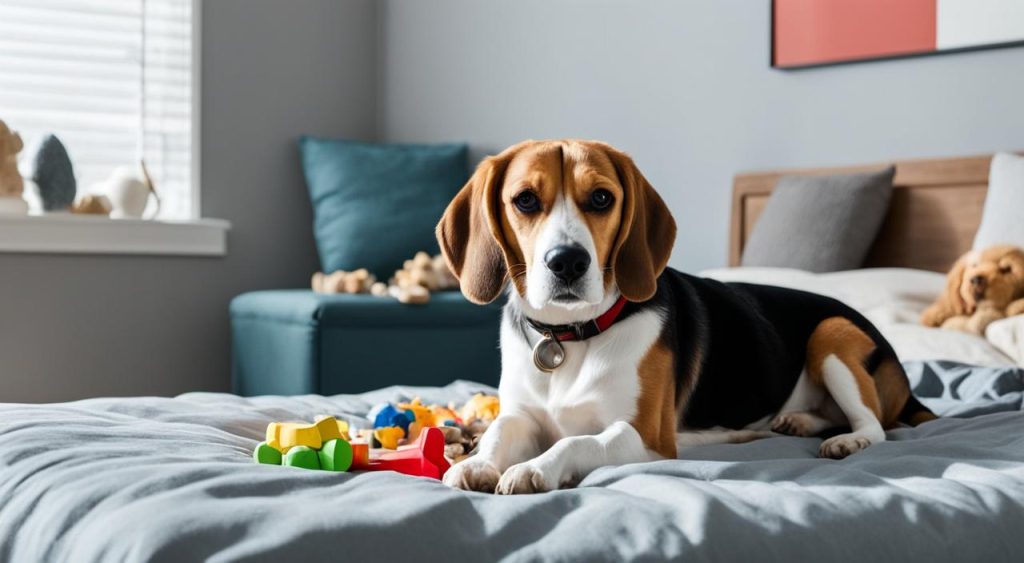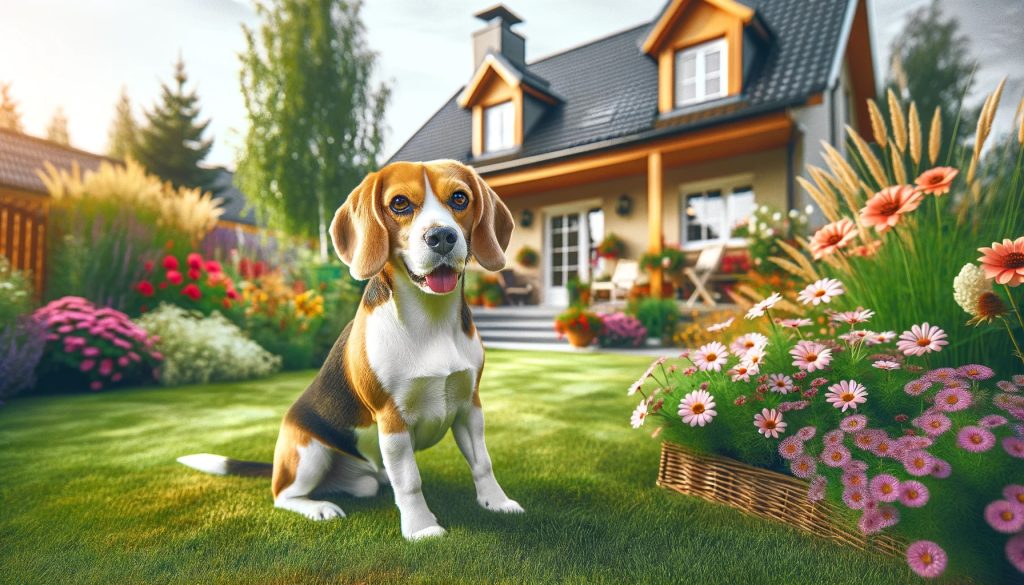Beagles are pack dogs that are known to be loyal and often struggle with being left alone. They can experience separation anxiety, which can manifest in behaviors such as excessive barking, pacing, destructive chewing, and escape attempts. Setting up the right environment for your beagle is essential in helping them cope with being alone. This can include creating a gated off section of a centrally located room, providing a comfortable bed and toys, using treat-release toys to keep them occupied, and playing calming music or leaving on a TV or radio. Saying goodbye and hello in the right way can also make a difference in your beagle’s behavior. By implementing these strategies, you can help your beagle feel less stressed and anxious when left alone.
Key Takeaways:
- Beagles are pack dogs and can struggle with being left alone.
- Separation anxiety in beagles can lead to destructive behaviors.
- Creating a comfortable environment for your beagle can help them cope with being alone.
- Using treat-release toys and providing mental stimulation can keep your beagle occupied.
- Implementing strategies for saying goodbye and hello can make a difference in your beagle’s behavior.
How Long Can Beagles Be Left Alone?
When it comes to leaving your beagle alone, it’s important to consider their age, temperament, and level of training. Puppies younger than 6 months should not be left alone for more than 2-3 hours at a time. They are still developing and require constant attention and care.
Adult beagles, on the other hand, can typically handle being alone for longer periods, usually around 4-6 hours. It’s important to note that this is a general guideline and may vary based on your specific dog’s needs and behavior.
To ensure your beagle’s well-being and comfort, it’s crucial to gradually increase the time they are left alone. Start with shorter intervals and gradually extend the duration as they become more accustomed to being alone.
Remember, the key is to provide them with a safe and comfortable environment during these periods of solitude.
Crate training can be an effective way to keep your beagle safe when left alone, but it should never be used as a long-term confinement solution. Beagles should not be crated for more than 6 hours without a break. Alternative options include confining them to a small room or dog-proofing the house to prevent any accidents or destructive behavior.
Mental and physical stimulation is crucial to help your beagle cope with being alone. Leaving them with interactive toys or puzzles can keep their minds engaged and alleviate boredom. Additionally, consider leaving background noise, such as calming music or a TV/radio, to reduce feelings of loneliness.
By implementing these best practices, you can help your beagle adjust to being alone for longer periods of time, ensuring their well-being and minimizing any potential separation anxiety.
Dealing with Separation Anxiety in Beagles
Beagles are known for their social nature, which makes them more prone to separation anxiety. This condition can lead to destructive behaviors, excessive barking, and house soiling, causing distress for both you and your beagle. However, there are strategies you can implement to help your furry friend cope with separation anxiety.
One effective approach is to provide your beagle with a safe space, such as a crate, where they feel secure and comfortable. This creates a den-like environment that can help alleviate their anxiety. Additionally, keeping them entertained with toys and mental enrichment activities can occupy their mind while you’re away, reducing their feelings of loneliness and stress.
Background noise or human interaction can also play a vital role in managing separation anxiety in beagles. Leaving on the TV or radio can provide a sense of companionship, while arranging for someone to visit or hiring a pet sitter can offer additional social stimulation.
If your beagle’s separation anxiety persists, it may be necessary to explore additional options. Consult with your veterinarian about the possibility of medication or seek professional help from a qualified animal behaviorist. Remember, every beagle is unique, and finding the right approach might require some trial and error.
By addressing separation anxiety and providing the necessary support, you can help your beagle feel more at ease when you’re not around, promoting their overall well-being and happiness. Preventing separation anxiety in beagles should always be a priority, and with time, patience, and the right strategies, you can help your furry friend overcome this challenge.>





